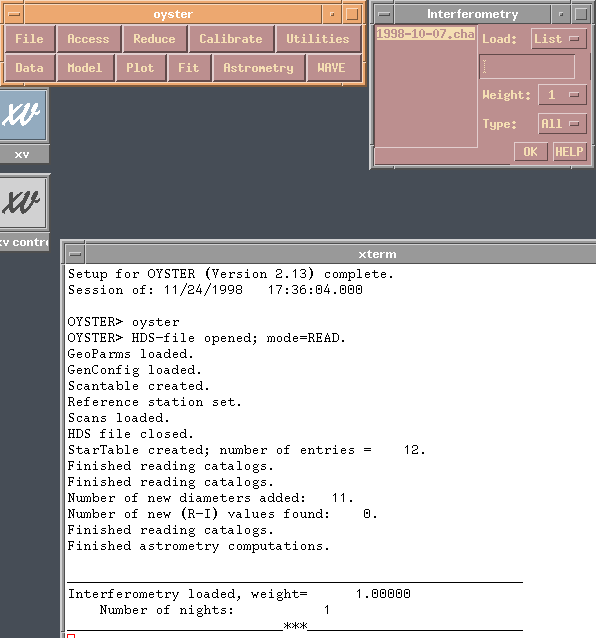Loading data for AMOEBA
AMOEBA is the collection of PV-WAVE scripts which computes model data and
fits parameters of a hierarchical stellar system to any combination of data
from interferometry, spectroscopy, photometry, and astrometry. (The photometry
part hasn't really been finished yet.) Since AMOEBA shares a lot of procedures
and functions with CHAMELEON (the top panel of buttons on the OYSTER widget),
the two were merged into OYSTER. Therefore, if you just calibrated your data,
you can go ahead and read in a model and plot it, without having to leave
OYSTER, or re-load the data. Just make sure you save the data to disk
before exiting OYSTER (use Access|Write|Interferometry for this).
On the other hand, if you come back the next day and want to restart OYSTER
to read in your calibrated data for modeling, you can use the
Data|INTERFEROMETRY widget to select all files you want to read. (If you want
to read only a single file, get_scandata,'1998-11-07.cha' will do just
as fine.) Only when
you click on OK, will OYSTER start loading the selected data. For the selection
of files, you have the option of selecting them from the list of files (present
in the current directory) in the left of the widget (option List), or from
a list contained in a disk file (option File), in which case you have to
specify that file's name in the box under the button. You can also tell
OYSTER to load all .cha files it can find in your current directory.

There are two more buttons in the data selection widget, which let you specify
the relative weight this type of data should receive in a fit compared with
other types of data currently loaded. This button can be changed at any time,
even after loading the data. The same is true for the Type button, which
just tells OYSTER which type of interferometry data to consider when doing the
model fitting.
At any time, you can check what data is loaded using Data|Summary (an sample
printout can be seen in the above figure). Interferometry data is loaded using
CHAMELEON's standard scan data reader, but since more than one night's of data
can be loaded but the internal scans structure can hold only one, the data
is buffered. (For you programmers: it would not be feasable to make an array
out of a structure which is already an array of scans.) I have tried to make
this process as transparent as possible to you, but you might want to keep
that in mind if you manipulate data using PV-WAVE commands, because in that
case, the structure scans must be updated with the loadnight procedure.
Next stop
Back to tour page
Back to main help page
